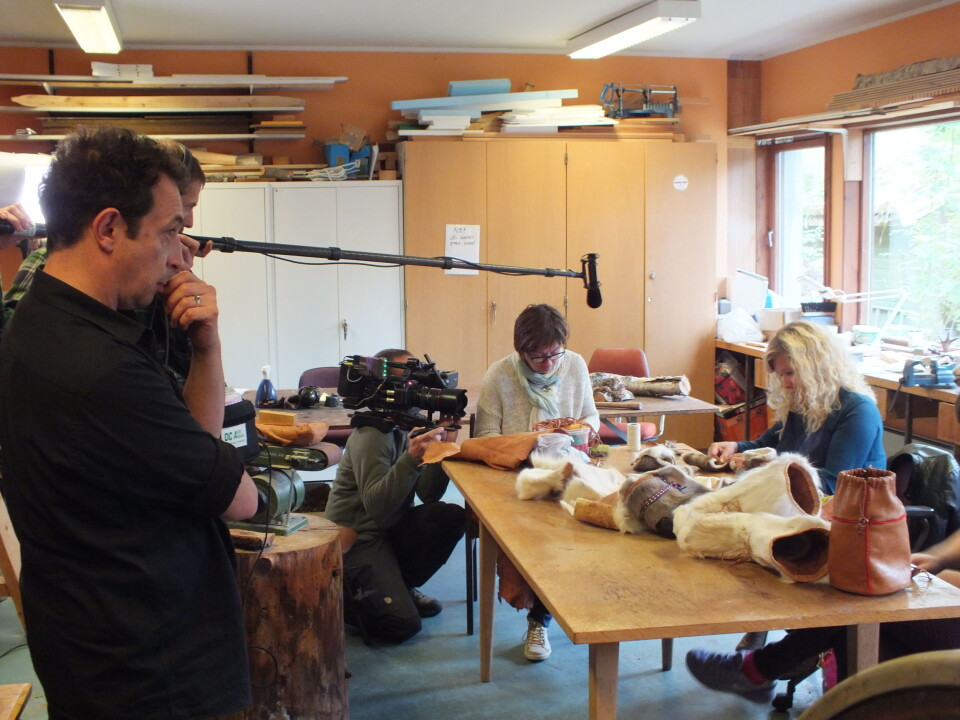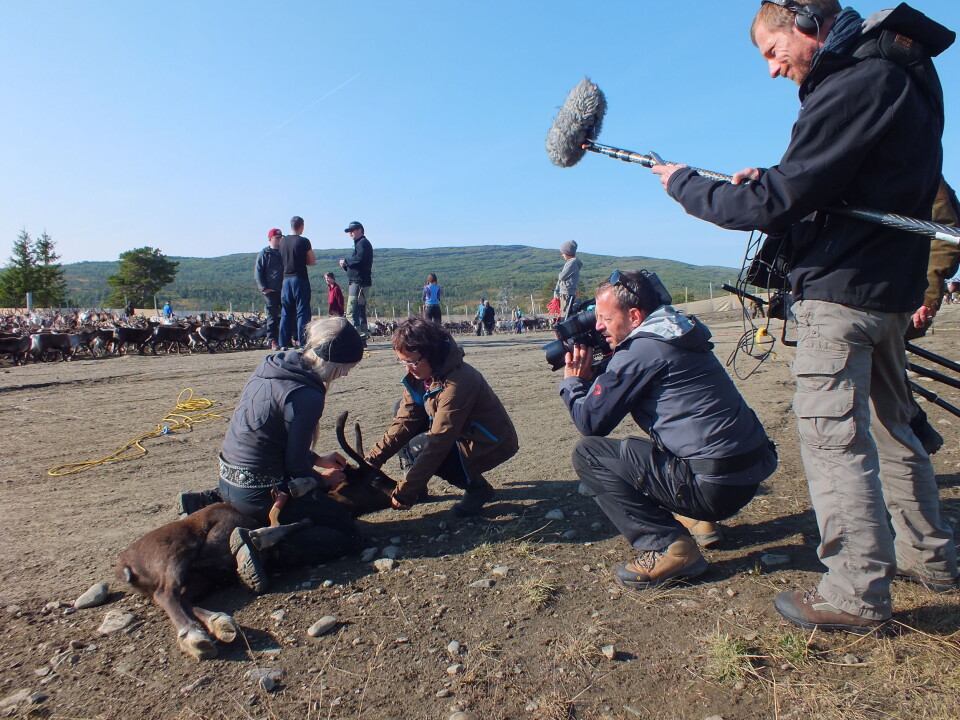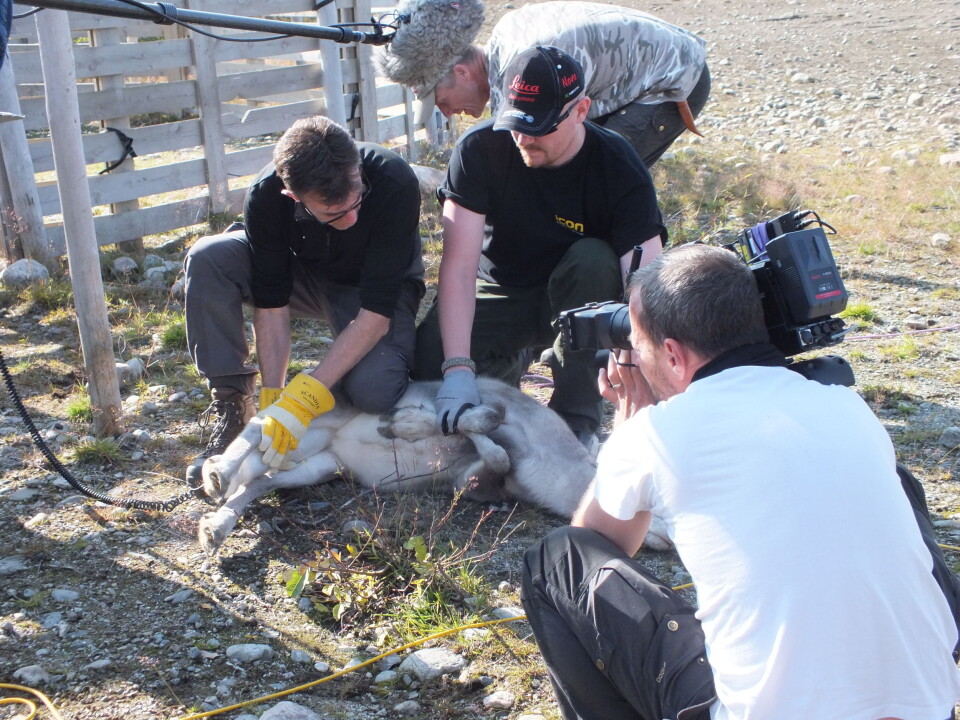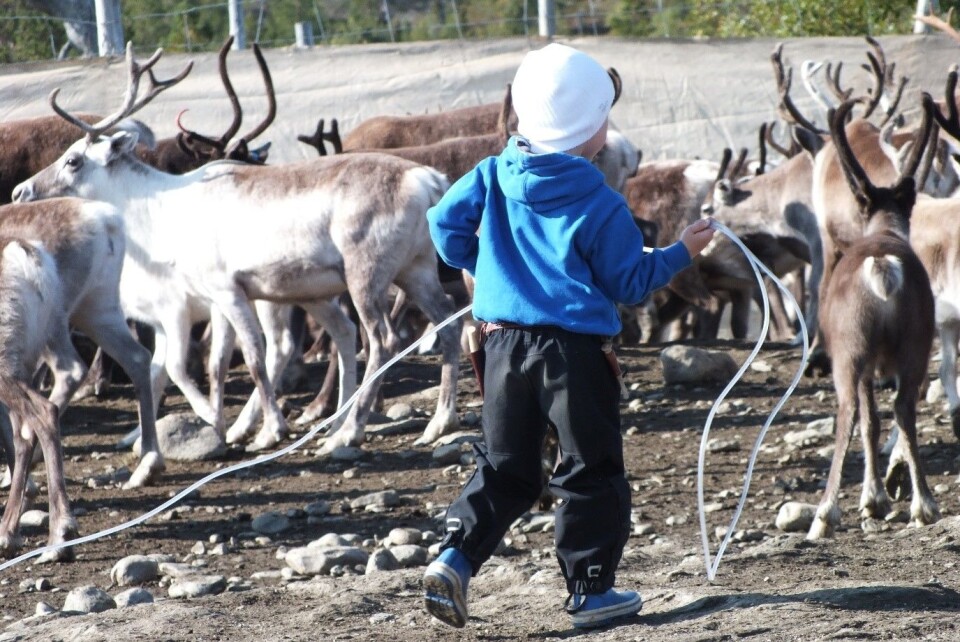Å leve med Tsjernobyl
Det er blitt 2016 og det alt for lenge sidan førre innlegg, noko som skuldast ein interessant og litt travel haust. Må prøve å få skrivi litt om utviklingsarbeid i Vågå tamreinlag der vi følgjer GPS-merka rein, om stråling og helserisiko generelt, og eit nytt prosjekt om oppfølging av befolkningsgrupper etter ulykker. Men fyrst: I mars er det 5 år sidan Fukushima-ulykka og i april er det 30 år sidan Tsjernobyl-ulykka, og det kjem vel til å prege nyheitsbildet etter kvart. For eksempel var franske Bellota films på besøk i september (same veka som NRKs Schrødingers katt handla om Tsjernobyl) for å gjere opptak til dokumentarfilmen «To live with it», som handlar om å leve i område med radioaktiv forureining. Produsenten, Hind Saih, står også bak dokumentarane «Battle of Chernobyl» (2006) og «Nuclear Alert» (2009).

Noko av utgangspunktet for «To live with it» er at mange framleis trur vi må flytte frå alle landområde om dei blir forureina etter kjernekraftulykker, mens historia altså inneheld nokre eksempel på at folk har måtta tilpasse seg eit liv med forureining. Situasjonen i Noreg er interessant fordi forureininga framleis er eit problem i dei mest forureina områda i Sør- og Midt-Noreg. Spesielt utfordrande – og «eksotisk» for eit utanlandsk filmteam – har sjølvsagt situasjonen vore for den sørsamiske reindrifta og kulturen, men innsatsen både til gardbrukarar og ikkje-samiske reindriftsutøvarar bør også nemnast i denne samanhengen. Men det var til Nord-Trøndelag det franske teamet ville, og med assistanse frå Gammaglimt hadde vi ei intens veke i Snåsa og Røyrvik med sterke forteljingar om konsekvensar av Tsjernobyl for samane som næringsutøvarar, privatpersonar og kulturbererar. Vi rakk også innom Analysesenteret i Trondheim, som har vore ein del av det lokale/regionale målenettverket i Noreg sidan 1960-talet. Dei har framleis utstyret dei den gong brukte for å måle forureininga frå dei atmosfæriske prøvesprengingane av atomvåpen!

I tillegg til Noreg har teamet bak «To live with it» besøkt dei Tsjernobyl-forureina områda i Kviterussland, og Fukushima. Gru-gler meg til å sjå resultatet: «To live with it» skal sendast på TV i Frankrike og Tyskland på 30-årsdagen 26. april. Håpar også ein norsk TV-kanal ser at dei må vise denne! Og no blir det også jobba med utdrag av filmmaterialet til Tsjernobyl-utstillinga til Saemien sijte i Snåsa – er glad dei fekk støtte frå fylkeskommunen til det!
To live with Chernobyl
Inspired by some discussions with international colleagues on communication on radiation issues I’ve decided I’ll write some of my blogs in English as well. Am planning blogs on our reindeer project in Vågå, on radiation and health risks, and on a new international project on how to follow up population groups after nuclear accident. But first: In March this year five years have passed since the Fukushima accident, and in April it will be 30 years since the Chernobyl accident. Guess these anniversaries will be visible in media. One example: Last September Bellota films visited Norway, shooting for their new documentary “To live with it” – about life in contaminated areas. The producer, Hind Saih, also produced the documentaries «Battle of Chernobyl” (2006) and “Nuclear Alert” (2009).

Part of the background for "To live with it” is the common notion that areas contaminated after nuclear accidents must be abandoned, while history actually shows examples of how people have had to adapt to a life with contamination. The situation in Norway is relevant because the Chernobyl contamination still causes problems in some areas in southern and central Norway. Especially challenging – and «exotic» to a foreign film-team – has of course the situation been for the South Sámi reindeer herders and culture, but the efforts by farmers and non-Sámi reindeer herders should also be mentioned. However, the French team wanted to visit the South Sámis and with assistance from Gammaglimt we had an intense week in Snåsa and Røyrvik with strong stories on the consequences of Chernobyl for the Sámis as producers, private persons and cultural bearers. We also visited the lab at Analysesenteret in Trondheim, which has been a part of the local/regional monitoring network in Norway since the 1960s. They still keep the equipment used back then for analysing contamination from the atmospheric nuclear weapons testing!
In addition to shooting in Norway the “To live with it”-team have been to the Chernobyl affected areas in Belarus, and to Fukushima. Am excited about seeing the result: “To live with it” will be broadcasted in France and Germany on the day of the Chernobyl anniversary, 26 April. Hope also channels in Norwegian – and other countries – will show this documentary! In addition, excerpts of the documentary will be part of the Chernobyl exhibition at Saemien sijte (Sámi museum) in Snåsa – I am happy support from the County authority make that possible!








